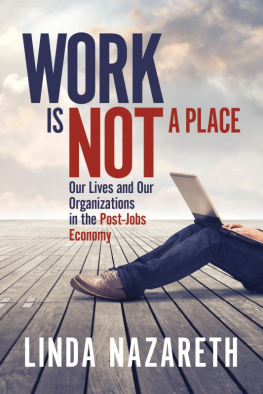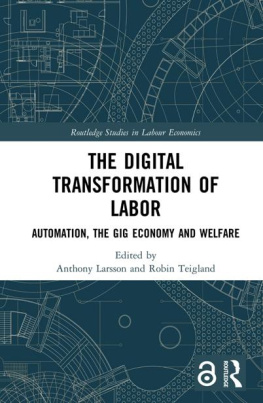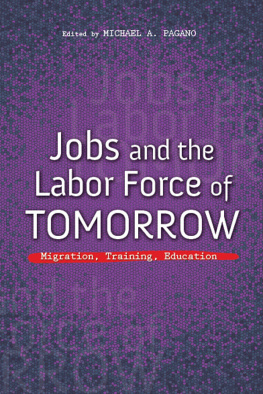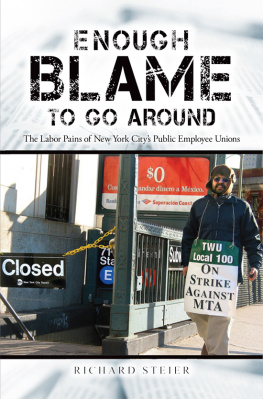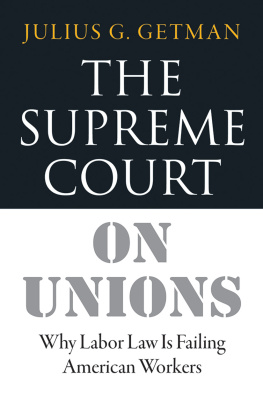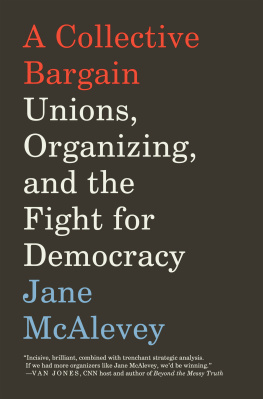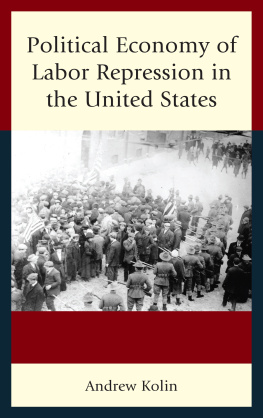C ONTENTS
Preface
Acknowledgments
List of Abbreviations
1. Introduction
2. Changes in Markets and Collective Bargaining
3. Using Power in the Workplace
4. Losing Power in the Networked Firm
5. Broadening the Comparison
6. Conclusions
Appendixes
A Interviews conducted in the United States and Germany
B Organizational characteristics and employment practices by country, in-house and outsourced centers
C Organizational characteristics and employment practices by collective bargaining arrangements, United States and Germany
Notes
Bibliography
P REFACE
Labor unions across the global North are struggling to improve pay and working conditions in expanding service sector industries. This is by no means an easy task. The workplaces of the new economy remain poorly organized. Even in European countries known for their corporatist political traditions, politicians are designing new legislation intended to break the grip of strong labor laws and employment protections on a stagnant economy. Worker representatives find their role in national policymaking and in corporate decision making weakened at a time when more insecure, lower-paid jobs are expanding.
This book is about the role that labor unions can and should play in modern service workplaces. Its central motivating question is whether strong and cooperative industrial relations institutions characteristic of social Europe have the potential to give service workers similar benefits to those achieved in the golden age of postwar manufacturing: productive and stable employment characterized by high job quality and low wage inequality. Past academic and policy debates on the relationship between national institutions, management strategies, and worker outcomes have focused overwhelmingly on large export-oriented sectors such as the global auto industry. Institutions in most service industries look a lot less coherent than those described in these accounts. Union membership and works council presence are much lower in services than in manufacturing. Service workers are also less likely to be covered by a union contract or to have traditional occupational training, and their jobs tend to be lower paid and less secure.
As these poorly regulated service jobs become more typical of where Americans and Europeans work, the questions comparative researchers asked in auto assembly plants and steel mills need to be revisited. Is there an inevitable convergence on one best practice employment model, as managers adjust to competition unfettered by laws or unions? Or does context matter, even in more peripheral workplaces: Do different laws and collective bargaining arrangements make a difference for management strategies and employee outcomes? What influence do these strategies have, in turn, on the strength and coverage of collective bargaining? These questions are at the heart of debates over the future of work and worker welfare in increasingly interconnected, postindustrial economies.
I attempt to answer these questions here through the lens of a comparative study carried out in U.S. and German call centers. The analysis looks at how unions and works councils have shaped employer strategies to restructure these easily rationalized service jobs, and how these strategies have in turn refashioned industrial relations institutions. My focus is on industrial relations rather than other institutions, such as vocational training or corporate governance. While collective bargaining is only one part of broader systems of rules and incentives at the national level, it is unique in regulating the balance of power in the workplace and in laying out the conditions under which employees can participate in management decision making. Empirical findings are drawn largely from two industry sectors: telecommunications, which continues to have strong unions in many countries, and the third-party call center industry, which is a newer sector made up of firms with weaker or no unions that often perform subcontracted call center work for telecommunications firms. In both sectors, I examine the changes that occurred in the organization of call center jobs during the 1990s and 2000s, following the liberalization of U.S. and German telecommunications markets.
Call centers are in many ways the ideal setting for examining how institutions affect management strategy and worker outcomes in postindustrial economies. They are among the most highly mobile of service workplaces, with jobs that are increasingly easy to outsource and that are often viewed as peripheral to firms core competencies. In many countries, government-driven liberalization of service markets has increased pressure on managers to cut labor costs for these jobs. For all of these reasons, call centers are workplaces where we might most expect to see convergence on weak collective bargaining institutions and a management model based on reducing costs rather than investing in job quality. For these same reasons, they are a good place to look for the causes of past and continued divergence in management strategy and worker outcomes.
The dynamics of growing competition, organizational restructuring, and erosion of industry-level bargaining are hardly unique to call centers. In this sense, they are typical of a range of easily rationalized jobs in growing, poorly regulated industries. If unions can make a difference for management strategy in these workplaces, there is strong evidence for the continued relevance of national industrial relations institutions in the regulation of employment. Evidence of their failure to improve or maintain working conditions likewise suggests the need for more careful study of the causes of these failures and their labor market consequences.
During my field research in the United States and Germany, I observed a number of differences in how call centers were managed. German call center agents generally were paid higher salaries and had more control over their work than those in the United States. They were more likely to be treated like professionals, with flexible schedules and rules that protected them from the kind of invasive electronic monitoring that was common in U.S. centers. However, the most striking differences concerned the process of management decision making, and the effects that this had on employment practices. In Germany, independent works councils participated in democratic consultation and negotiation over these decisions. Worker representatives used their strong participation rights to help managers find compromise solutions that reduced costs and improved productivity and service quality, while ensuring that the privacy, dignity, and economic interests of the workforce were respected. Meanwhile, U.S. unions struggled to enforce the limited terms of the collective agreements that they were able to negotiate, against an often hostile management. Where unions were not present, pressures to cut costs and the easy fix of new technologies seemed to leave managers with little choice but to intensify monitoring and discipline on a low-wage, high-turnover workforce.
The different practices and outcomes in these workplaces could thus be more or less directly traced to institutions that gave worker representatives widely diverging participation rights and bargaining power. German codetermination rights, exercised by strong and independent works councils, proved to be a crucial support for alternative, high-involvement employment systemseven in easily rationalized service jobs. Put another way, strong institutional supports for workplace democracy pushed call center managers to take the high road in workplaces where there were many incentives to reduce pay and rationalize work.



